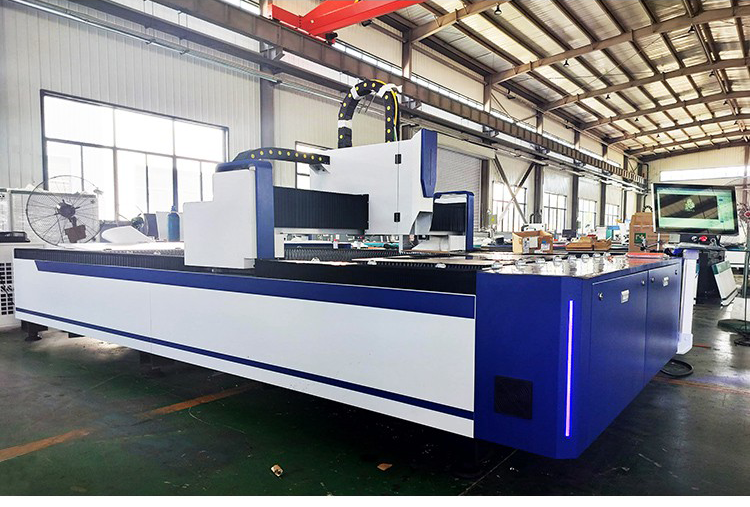Laser cutting machine uses high-power laser beam to cut materials. Its basic principle includes the following steps:

Laser generation: The laser cutting machine generates a beam of high-energy laser through a laser (such as CO2 laser, fiber laser or YAG laser). Laser is generated in the form of electromagnetic radiation, which has extremely high brightness and directionality.
Laser beam transmission: The generated laser beam is focused to a very small point through a series of mirrors and lenses. The diameter of this focus point is usually very small, which can reach the micron level, making the power density of the laser very high.
Material heating and melting: When the focused laser beam irradiates the surface of the material, the material absorbs the laser energy, causing the temperature of the irradiated area to rise rapidly, and the material melts, ablates or vaporizes. For metal materials, auxiliary gases (such as oxygen, nitrogen or air) are usually used to help blow away the melted material or promote chemical reactions (such as oxidation) to speed up the cutting process.
Cutting completion: The laser beam moves along the set path to cut the material. Laser cutting machines can precisely control the movement of the laser beam through a numerical control system (CNC), thereby achieving precision cutting of complex graphics.
Cooling and forming: After cutting, the edges of laser cutting are usually very smooth, and the deformation of the material is low due to the small heat-affected area. After proper cooling, the cut parts can be used directly or processed later.
Laser cutting machines have the advantages of high precision, high speed and good cutting quality, and are widely used in metal processing, automobile manufacturing, aerospace and other fields.




